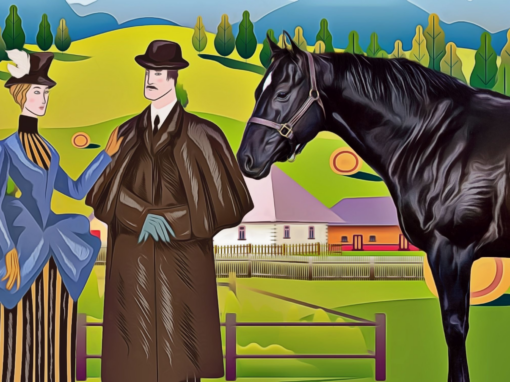Cheap Horse Riding Boots
When you are teaching, do you insist that your beginner riders either wear riding boots or do you have clogs, toe-stoppers, or similar?
Probably I should ask a better question. Have you ever seen anyone dragged? I guess that if you have then you wouldn’t even be asking the first question.
I am lucky enough that I haven’t seen anyone dragged more than a few metres, but I have heard horror stories of people being dragged who haven’t lived to tell of the experience.
Now I understand that boots are expensive and if you have to insist that people have boots before their first lesson, this severely restricts your options to teach lots of beginner lessons.
If your students are buying their own boots, remember to emphasize safety and educate your beginner riders about the importance of proper footwear. If they understand the potential risks and the role of appropriate footwear, this plays a part in riding safely and encourages them to make responsible decisions.
But if you purchase boots in every size for every potential rider you may have is going to cut into your cash flow,
So the option I recommend is to use toe cages, toe stoppers, clogs, or something similar, it is certainly a much more economical option than buying boots in every size.
Remember too that if you use toe cages, you need to regularly check that the screws that hold them in stay tight. If you don’t check, they will eventually work their way lose, and fall out so the toe cages can’t do the job they are meant to.
This is just part of the regular task of checking and cleaning your gear, so if you have staff or volunteers cleaning your saddlery for you then as part of their training, teach them about this.
Another option is to buy second-hand riding boots. You can ask around other horse owners and riders and ask them if they know of anyone who either doesn’t ride more or has outgrown previous pairs of boots.
Keep your eyes open for garage sales or car boot sales that someone in your horse or pony club may be having. Or you can even organise one as a fundraiser for your club.
If you have a friendly supportive local saddlery, you may be able to work with them to ‘hire purchase’ riding boots. Your student pays a deposit on a pair of boots and makes regular payments until they are paid off. The only difference is that they are kept at your establishment until they are fully paid off.
Or as you become more established, this can be another stream of income for you to sell boots and also helmets and allow students to pay them off a bit each week as they have their lessons.
But don’t cut your costs so much that you can’t offer your students safe options. You will never be 100% safe, but you have a duty of care to your students to keep them as safe as possible.
Have a safe ride!
Glenys 🙂
International Horse College
Music by Bensound.com with License code: 80OZ9BB6QLCGRYTE
———————————————-
If you are interested in a career in the International Horse Industry then contact our friendly staff for a free Equine Industry Career Consultation.
International Horse College
Phone: 0438 549 577 | +61 7 3102 5498
Email: Admin@InternationalHorseCollege.com
Website: www.InternationalHorseCollege.com











Great ideas, thanks for sharing
This is great advice, love it and I shall be using it in the future and for myself
Very useful information! I will have to keep this article in mind when I go to buy riding boots.
This is very informative and contains very good advice! thank you